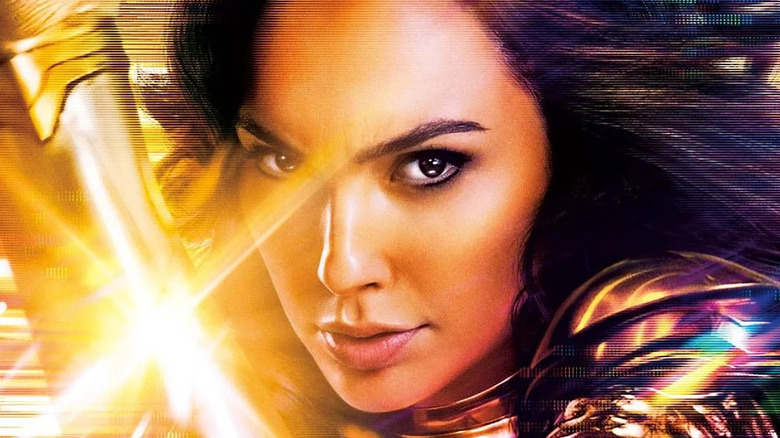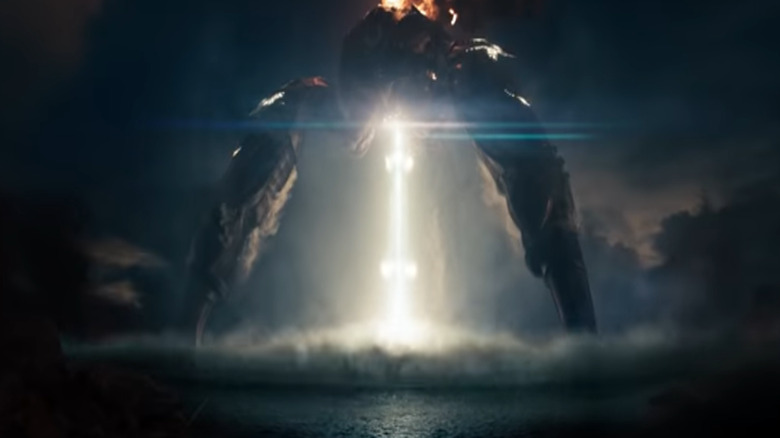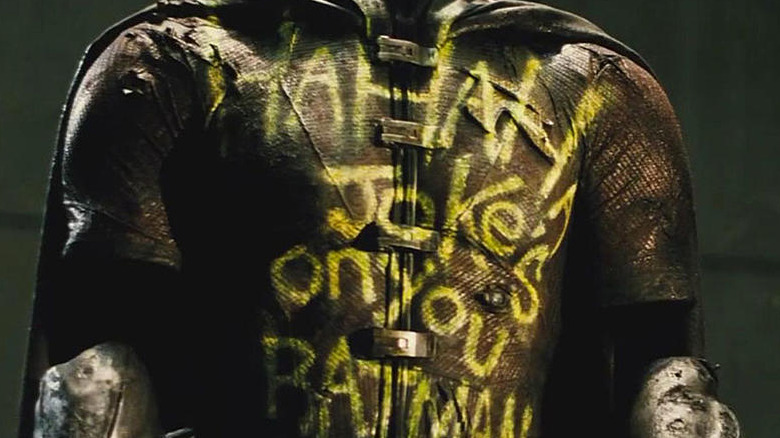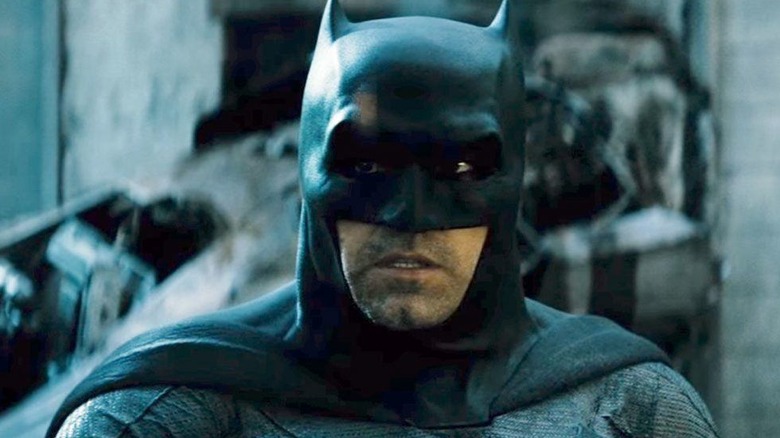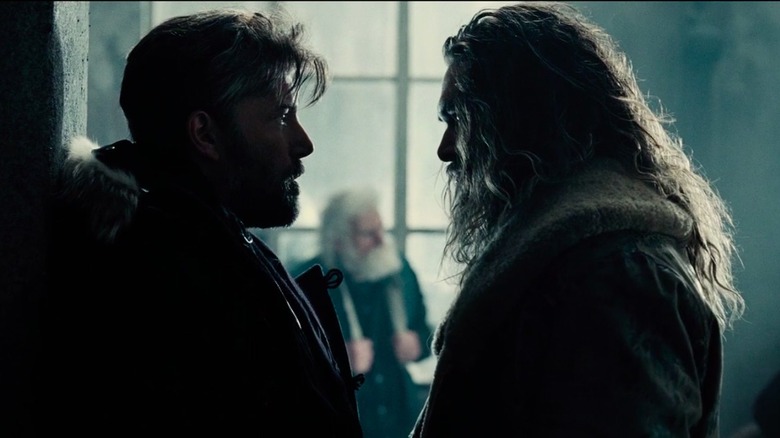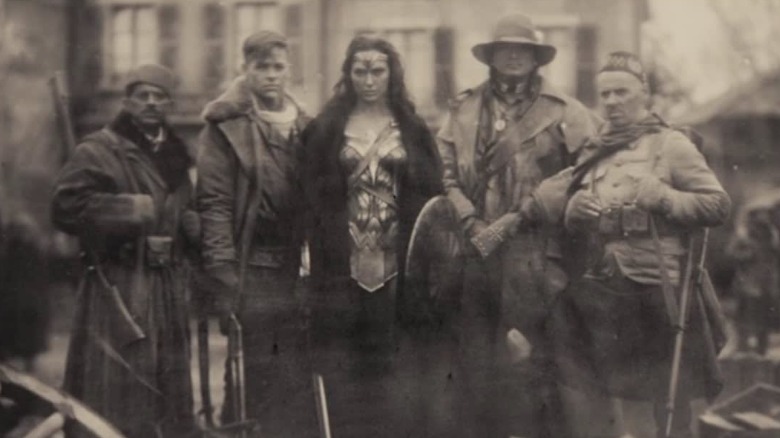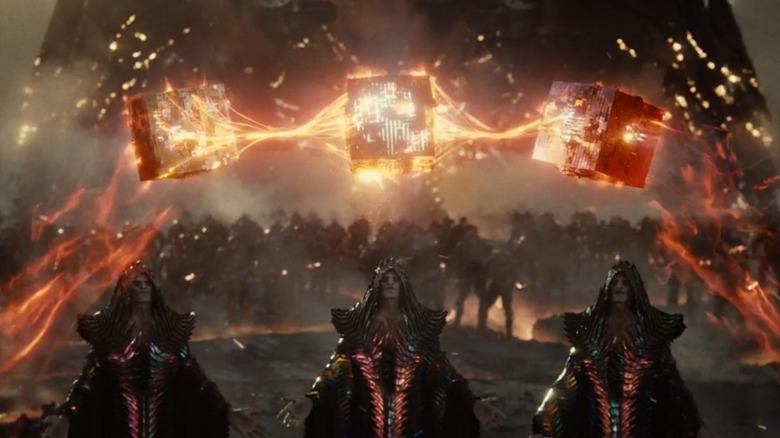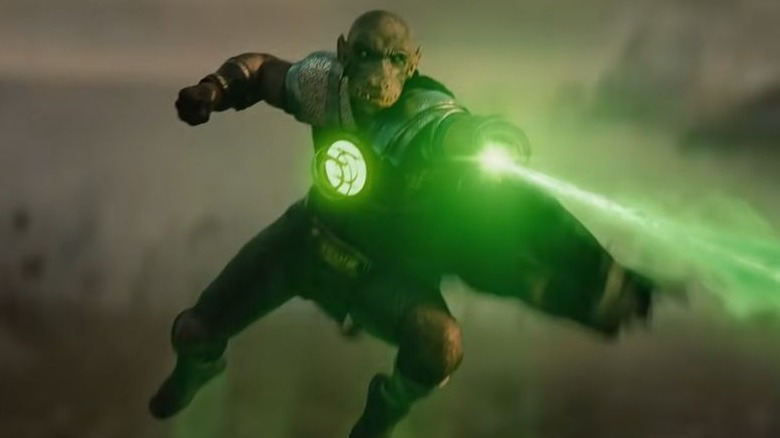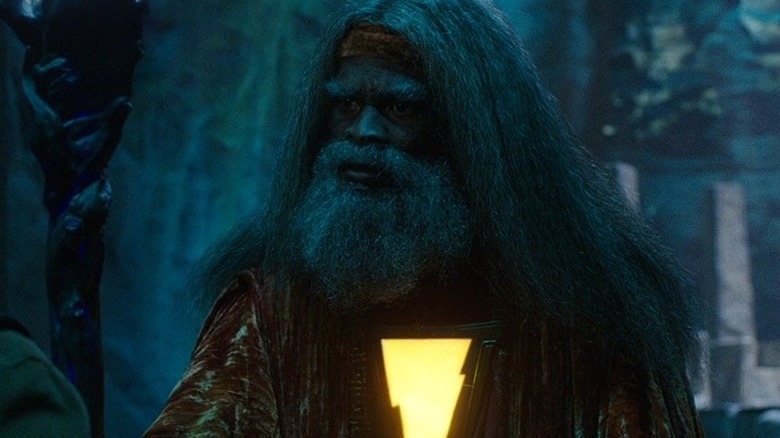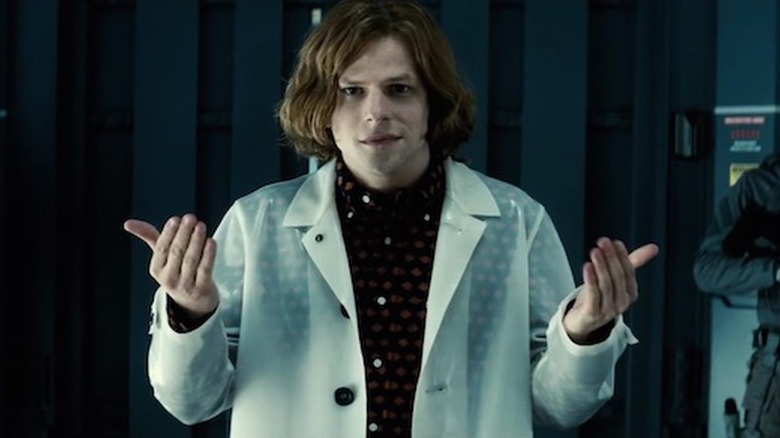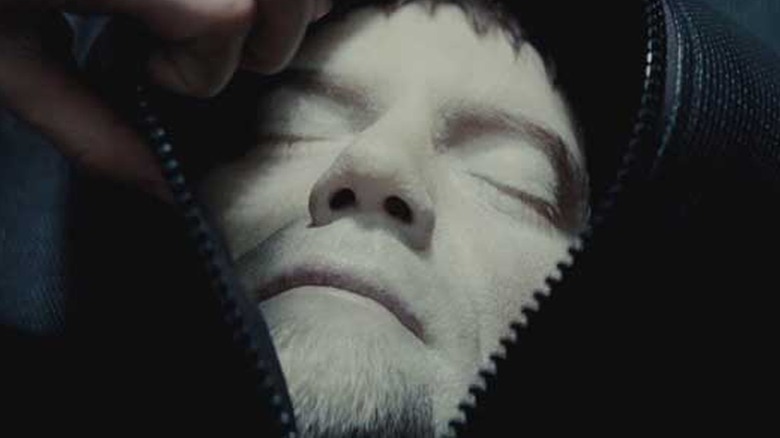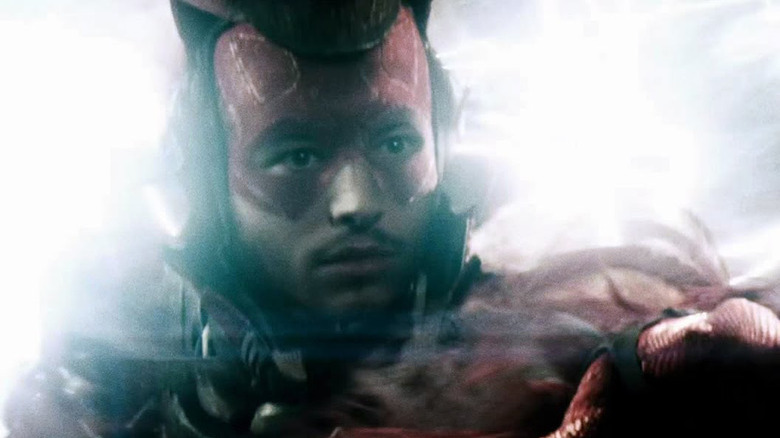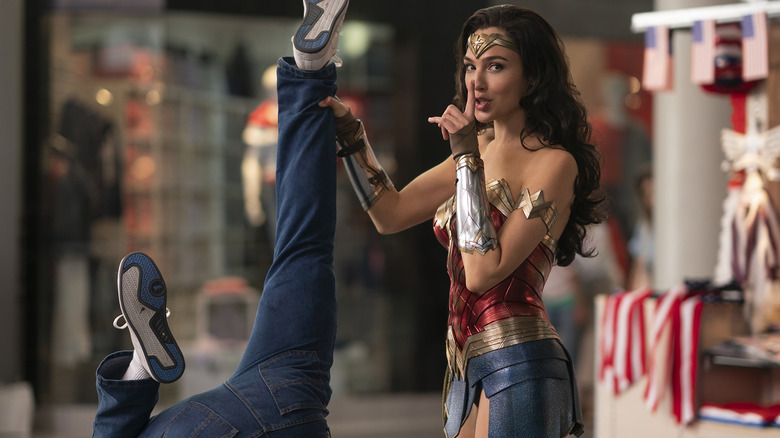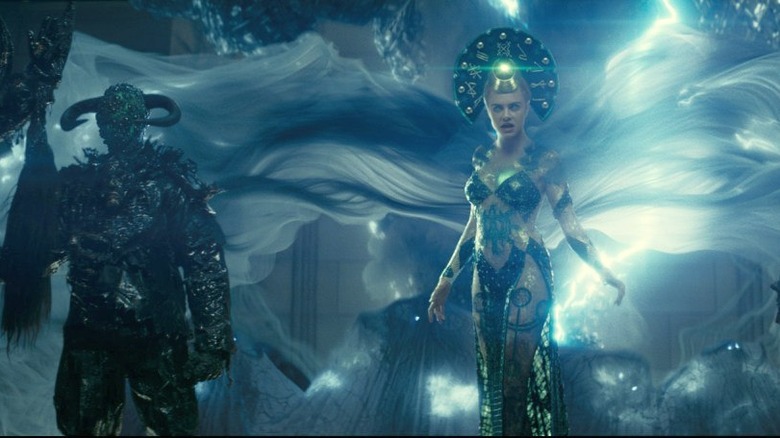DCEU Storylines That Disappeared Without Explanation
With the films of the DC Extended Universe, we finally get to see key adventures of some of the greatest characters in comic history on the big screen. From the death of Superman to the foundation of the Justice League, many characters and important storylines have been introduced thus far. While some great arcs have been done justice, as with Wonder Woman's excellent debut or Superman's rebirth and return, others have thus far been left hanging. In part, this is a consequence of shifting gears. With the DCEU moving away from Zack Snyder's long plan for the universe, certainly some narrative threads would remain dangling. There's also always a risk of loose story threads when so many projects are developed with complete independence rather than building towards a greater whole.
This unfortunately means that some important elements are unanswered, no matter how unsatisfying that may be from a narrative perspective. What follows is a number of DC storylines, plot points, and narrative threads that disappeared thus far without explanation. It doesn't mean they'll never return, of course, but for now these are all major unfinished business for the growing DC Extended Universe.
Where were the Atlanteans in Man of Steel?
The film that kicked off the DCEU as we know it was "Man of Steel," following the evolution of one Clark Kent (Henry Cavill) from small town American alien boy to becoming Superman. In the process he faces villains from his long lost Kryptonian heritage: General Zod (Michael Shannon) and his renegade soldiers after their escape from imprisonment in the Phantom Zone. Zod's genocidal plan was to use The World Engine, Kryptonian technology that can terraform a world into one inhabitable for Kryptonians, on Earth. The result would be an Earth remade in the image of Krypton and suitable to Kryptonian life ... but at the cost of its existing life. Zod's own ship, the Black Zero, contributed towards the terraforming on one end of the planet with the World Engine sitting over the Indian Ocean.
Here's the thing: the terraforming process would affect all life on Earth including the oceans, and the World Engine was operating directly over the Indian Ocean. We know from DC history and "Aquaman" that the Atlanteans are extremely sensitive to changes in or mistreatment of the world's oceans, and they have strong weaponry and technologically advanced vehicles. Given what we know, there's no reason why they wouldn't respond to the World Engine rather quickly, perceiving it as an attack against their seas and sovereignty. While Superman did halt its efforts somewhat quickly, it's surprising they didn't react. Where were they that was more pressing than this terraforming attack?
What happened to Robin?
"Batman v Superman: Dawn of Justice" is the first DCEU film to incorporate the Dark Knight himself, folding Batman in after he's spent 20 years fighting crime in Gotham. At this point, Batman (Ben Affleck) is a hardened and more violent vigilante (even taking to branding criminals), and he works alone with the help of Alfred (Jeremy Irons). When we see the Batcave, one of its more haunting pieces is a damaged Robin costume in a glass case with "HAHAHA JOKE'S ON YOU BATMAN" spray-painted across the front. There are bullet holes in the suit, but there's little in the film to explain its backstory.
We know a few key pieces of backstory from subsequent comments and films. We know that, unlike the comics, this dead Robin is Dick Grayson instead of Jason Todd. Harley Quinn's (Margot Robbie) introduction in "Suicide Squad" lists her as an accomplice to Robin's murder, which admittedly causes problems for the intended timelines of both Snyder and "Suicide Squad" director David Ayer. Joker has his gold grill in his mouth upon meeting Harleen Quinzel, but it is said to have appeared as a result of Batman beating him in retaliation for the murder. If that's the case, when and how did the Joker actually kill Robin, and what was Harley's actual relation to that crime?
Where is Batman's entire history?
Talking about the lack of clarity over Robin's death in the DCEU highlights how little we know exactly about Batman's 20-year history of fighting crime in Gotham. In a telling line to Alfred, Bruce Wayne laments, "20 years in Gotham, Alfred. We've seen what promises are worth. How many good guys are left? How many stay that way?" The line suggests that fellow vigilantes have fallen (like Dick Grayson's Robin) and perhaps turned to crime, as Jason Todd/Red Hood and Harvey Dent/Two-Face have done in the comics.
In "Suicide Squad" we see Killer Croc and watch the Caped Crusader chase Joker and Harley Quinn and elsewhere intervene to capture Deadshot (Will Smith). With Margot Robbie's Harley Quinn as a thread, we also see that Victor Zsasz (Chris Messina) and Black Mask (Ewan McGregor) are both present in this corner of the DCEU. But other than those vague generalities, we know almost nothing about Batman's history in Gotham or with these villains, the vigilantes that have supported his crusade, etc. Plus most of the DCEU has moved on instead of clarifying any of these omissions. What's the history of this Batman and his allies and conflicts? How did it contribute towards his actions in "Batman v Superman"?
Does Batman even have a secret identity in the DCEU?
In the comics, Batman's careful guarding of his secret identity is a huge element of the character's mythos, so much so that a villain's ability to deduce it is often a measure of how dangerous that villain is. Bane figured it out through careful study of body language. Ra's Al Ghul and his daughter Talia knew it early on, while Hugo Strange's deduction cements his abilities as a criminal mastermind. In the DCEU, however, it seems like people know it who frankly shouldn't.
For example, in the post-credit scene for "Suicide Squad," it's suggested that Task Force X head Amanda Waller (Viola Davis) knows it from the get-go. But what's even odder is that upon Bruce Wayne's trek in "Justice League" to find "the Aquaman," he encounters Arthur Curry (Jason Momoa) in an isolated fishing village, where Curry says, "Let me get this straight, you do it dressed ... like an actual bat." We can't tell in context how much of that was revealed or how much he already knew, but Bruce sure wasn't careful about revealing and discussing his secret identity with someone who hadn't yet been confirmed as an ally. And in the bonus scene in "Zack Snyder's Justice League," even Joker calls Batman "Bruce." Does he even try to keep it a secret? What is the place of that secret in this era of his life?
Why didn't Batman know about metahumans earlier?
We don't see Batman in "Man of Steel," but we discover in "Batman v Superman: Dawn of Justice" that he witnessed Superman's fight with Zod firsthand in Metropolis, afterwards considering Superman to be a grave threat. By all evidence, seeing the Kryptonians is Bruce's first exposure to metahumans, and that discovery (and Lex Luther's machinations) provokes Bruce to steal encrypted LexCorp files. We discover these files contain information on various metahumans, including Wonder Woman (Gal Gadot), The Flash (Ezra Miller), Cyborg (Ray Fisher), and Aquaman. In the later post-credits sequence from "Suicide Squad," Amanda Waller gives Bruce a trove of government files on some of these metahumans (and others).
All this sudden post-Superman concern about metahumans prompts the question: is this the first time Batman has ever heard of superpowers? Batman has the comic reputation for being prepared for absolutely anything a human can prepare for. We know from "Suicide Squad," and later "The Suicide Squad," that sometimes Bat-villains like Killer Croc and King Shark are in Batman's world. In his 20 years in Gotham it's plausible he's gotten wind of metahumans before this. Meanwhile, Wonder Woman heavily intervened in World War I before becoming pivotal in a 1984 event that affected the entire literal world. There's little reason to expect it took Batman this long for his world-shattering "there are metahumans" moment.
What exactly are the Mother Boxes in the DCEU?
In the comics, Mother Boxes are sentient supercomputers fashioned by Apokalips' equivalent (but good) planet New Genesis and its own New Gods. Each Mother Box has a unique identity and independent will of its own, in addition to a vast array of creative powers. They can create Boom Tubes for transportation, return their hosts to life, heal injuries, sustain gravity ... their effects are nearly limitless. In the DCEU, however, their uses and history are unclear. For one, the DCEU posits that these mysterious artifacts require three to make the "Unity," which will allow Darkseid to terraform the Earth into a more Apokalips-like planet for takeover, as well as let him transport his army to Earth. The other central DCEU use for Mother Boxes is that one saved Cyborg's life and grafted his metallic components to his body.
Other things are unclear about the Mother Boxes in the DCEU. In "Zack Snyder's Justice League," Cyborg refers to them as "change machines," adding, "The Boxes don't think in terms of healing or killing, alive or dead. They rearrange matter at the will of their masters." It suggests their vast power, but it is unclear why they would need three to allow transportation for Darkseid when, in the comics, one would likely do the trick. Nor does it explain why one chose Cyborg, nor why Steppenwolf was initially able to use it to form the Unity afterwards, when the comics establish Mother Boxes are loyal and have a will of their own. Essentially, how the DCEU treats them begs a ton of questions that need answered.
Where are the Green Lanterns?
In "Justice League" (both versions), we see the first war between Earth's forces (Atlanteans, Amazons, humans) and the forces of Darkseid that took place 5,000 years ago. Regardless of the version, both showed a Green Lantern fighting alongside Earth's forces, then dying in the battle with its power ring flying off to find a new Lantern. Lanterns essentially protect sectors of space, and will intervene in situations on a planet they specialize in protecting from extraterrestrial threats, invasions, and other space-based attackers. Most importantly, sectors shouldn't go without a protector (which is why the ring sought a new Lantern immediately).
So ... where were the Lanterns over the last 5,000 years? Where were the Lanterns when Zod and the Kryptonians attacked Earth in "Man of Steel"? Where were they when Doomsday emerged in "Batman v Superman," or especially in "Justice League" when another extraterrestrial invasion occurred? These are exactly the sorts of interstellar conflicts that Green Lanterns are supposed to respond to, and while we'll see Green Lanterns in an upcoming HBO Max series, it makes little sense that they'd sit out these subsequent interstellar assaults. Why have we seen no Lanterns (which Steppenwolf at least acknowledged in our current era) in 5,000 years?
Where was the Council of Wizards the entire time?
In "Shazam!" the DCEU opens up its magical side through its introduction to the ancient wizard of the title (Djimon Hounsou), the history of the Council of Wizards, and the transformation of Billy Batson (Asher Angel) into Shazam (Zachary Levi). In the film, the Rock of Eternity is said to be the source of all magic as well as the place where the Seven Deadly Sins are kept. The original wizard Shazam and his seven family members (of which he is the last) formed the Council of Wizards there, and at some point in the past Shazam gave Teth-Adam (later known as Black Adam) powers in that realm. The conflict pitting Black Adam and the unleashed Seven Deadly Sins against the Council of Wizards resulted in the deaths of most of the latter. Considerable time passed before Shazam transferred his powers to Billy Batson and later Billy's own Shazam Family to fight the newly released Seven Deadly Sins and the villainous Dr. Sivana (Mark Strong).
Certainly a lot will be explained about Black Adam in subsequent films. But in the comics he began life as an Egyptian slave, putting the events that killed most of the Council of Wizards approximately around 5,000 years ago — when the Atlanteans, Amazons, and early humans fought the forces of Darkseid in "Justice League." If the Council of Wizards were around, where were they when evil alien gods were invading? Gods, Atlanteans, and Amazons were all there, yet the Wizards didn't show up to protect the Earth at this pivotal time.
What are Luthor's actual motivations?
In "Batman v Superman: Dawn of Justice," Lex Luthor (Jesse Eisenberg) wages a multi-pronged attack on Superman that involved steps like framing Superman for an attack in Africa, reminding Batman of Superman's role in the Metropolis attack, framing Superman for bombing the Senate, and then kidnapping Superman's mom. In a moment of justification he claims that his motivation is basically being against the notion of 'gods' on Earth, with discussions like "Devils don't come from hell beneath us. No, they come from the sky," or "I figured out way back if God is all-powerful, He cannot be all good. And if He is all good, then He cannot be all-powerful." We aren't really given other reasons for Luthor to hate Superman. In the comics Luthor is said to have a long history and personal vendetta against him. Not so here. The only reason we have is Luthor's supposed disdain for "gods" that have power above humans.
Luthor's final plan beyond his convoluted mess of tactics involves mixing his own blood with Zod's body, combining the two with Kryptonian technology to create Doomsday, the ultra-powerful behemoth that kills Superman. So his motivating factor is apparently a hatred of gods, and yet ... his final plan is to engineer a god that's more powerful, more animalistic, and less subject to human control? That's not what a brilliant planner would do with that motivation, so what's Luthor's real incentive for absolutely hating Superman?
Why did human blood mixed with Kryptonian DNA make a stronger, less smart monster?
Regarding Luthor's engineering of the Doomsday monster in "Batman v Superman: Dawn of Justice" ... the process makes relatively little sense. Lex enters the Genesis Chamber of the Kryptonian scout ship using Zod's fingerprints and command key. He's taught the wealth of knowledge from the Kryptonian archives, learning of an ancient Kryptonian monster (Doomsday) that he re-creates as a failsafe if Batman can't or doesn't kill Superman. The process involves bringing Zod's corpse into the Genesis Chamber, then Luthor cutting himself and bleeding into the Chamber and onto Zod. The resultant engineering feat is a version of the recreation of Doomsday, an effectively mindless creature with immense strength (at least on par with if not stronger than Superman), boundless rage, and some serious regenerative abilities.
What makes little sense is why corrupting Kryptonian DNA with human DNA made such a strong if not stronger entity than Superman. Humans look like Kryptonians in every relevant way, but Doomsday is larger than either and looks like neither. Kryptonians are massively stronger on Earth than humans are, and Doomsday seems stronger than Kryptonians despite the addition of human DNA. Adding human DNA wouldn't be the recipe to make this ancient beast, because it's unlikely that its ancient Kryptonian creator had humans lying around, and why in the world would blending Kryptonian DNA with human DNA not make Doomsday a hybrid of the two, thus weaker than Supes? It makes little sense.
What's the deal with the Flash time travel sequence?
In "Batman v. Superman: Dawn of Justice", Bruce Wayne is woken from a nightmare by a vision of Barry Allen, aka The Flash. The latter offers Bruce a warning about the future (albeit vague and confusing), saying "Bruce! Listen to me now ... It's Lois. It's Lois Lane. She's the key. Am I too soon? No, I'm too soon! You were right about him. You've always been right about him! Find us Bruce ... you have to find us!" In "Zack Snyder's Justice League," we discover that in the director's intended future, Superman succumbs to the Anti-Life equation and under Darkseid's rule lays waste to many of the latter's enemies. The Flash, we can infer, went back in time to warn Batman about Superman's inherent danger.
Of course this was a plot thread that the DCEU didn't move forward with, so there's a high chance it will never be fulfilled and we only see in part where it may have been intended to go. At the same time, the Flash sequence still exists within DCEU continuity, but it is unclear how they're going to try to give it finality and meaning, if at all.
How did Wonder Woman 1984 not change the whole world?
In "Wonder Woman 1984," the FBI turn to Dr. Barbara Minerva (Kristen Wiig) to aid in the identification of the wish-granting Dreamstone. Diana Prince unintentionally wishes for Steve Trevor (Chris Pine) to return while Minerva wishes to become like Diana, granting her ever-growing powers. Failing businessman Maxwell Lord (Pedro Pascal) wishes to become the stone itself. It grants him the ability to gain power every time someone makes a wish through him, which he uses to eventually take over the White House, secretive U.S. communications technologies, and effectively the whole world as he grants the wishes of humanity. All these wishes come with a cost to their users, of course, and it all pushes humanity nearly to the point of global nuclear war. Wonder Woman uses her Lasso of Truth on Lord, convincing the world — including Lord — to end the crisis by renouncing their wishes.
But even though there's no indication that renouncing wishes made anyone forget the events that just occurred on a global scale, the movie just sort of moves on. If everyone on Earth was allowed to make wishes that came true, causing massive global chaos, that would change human history, civilization, and religion as we know it. It would reveal the existence of magic, a big deal, and publicly confirm the existence of metahumans as early as the 1980s. It would change literally everything in the DCEU, but instead was dropped like it wasn't a big deal.
Does the US government not understand magic?
In "Suicide Squad," Amanda Waller builds a team of expendable super-villains (Task Force X) to go on dangerous, high-risk missions in the wake of Superman's death, in exchange for commuted prison sentences. The main exception is Dr. June Moone (Cara Delevingne), who is possessed by an ancient interdimensional sorceress known as Enchantress and controlled by Amanda Waller's possession of her heart. When Enchantress and her ancient brother Incubus move to take over Earth, the pair use magic to turn a variety of people into their supernatural soldiers. The odd thing about all this is that the villains here are clearly magical, mystical threats and Waller knows this, but most of the members of Task Force X (Deadshot, Killer Croc, Slipknot, Captain Boomerang, Harley Quinn) have literally no mystical abilities or relation to magic.
This is a major oversight, because the only reason the team succeeds (surprise!) is due to the efforts of its two remaining magical members — El Diablo in his cursed full fire form fights Incubus, pushing him over a bomb, and Katana uses her soul-consuming sword to end his threat forever. Waller knows Enchantress is a sorceress, so why send an ill-chosen team for a magical job? This isn't even the U.S. government's first run-in with the magical arts or with gods — Maxwell Lord's magic controlled the U.S. president, affected the whole world, and nearly caused a nuclear holocaust in the 1980s. Was the U.S. government so uninterested in magic afterwards that they never bothered to have good contingency plans against magic attacks? And have they gotten any better on that front?
